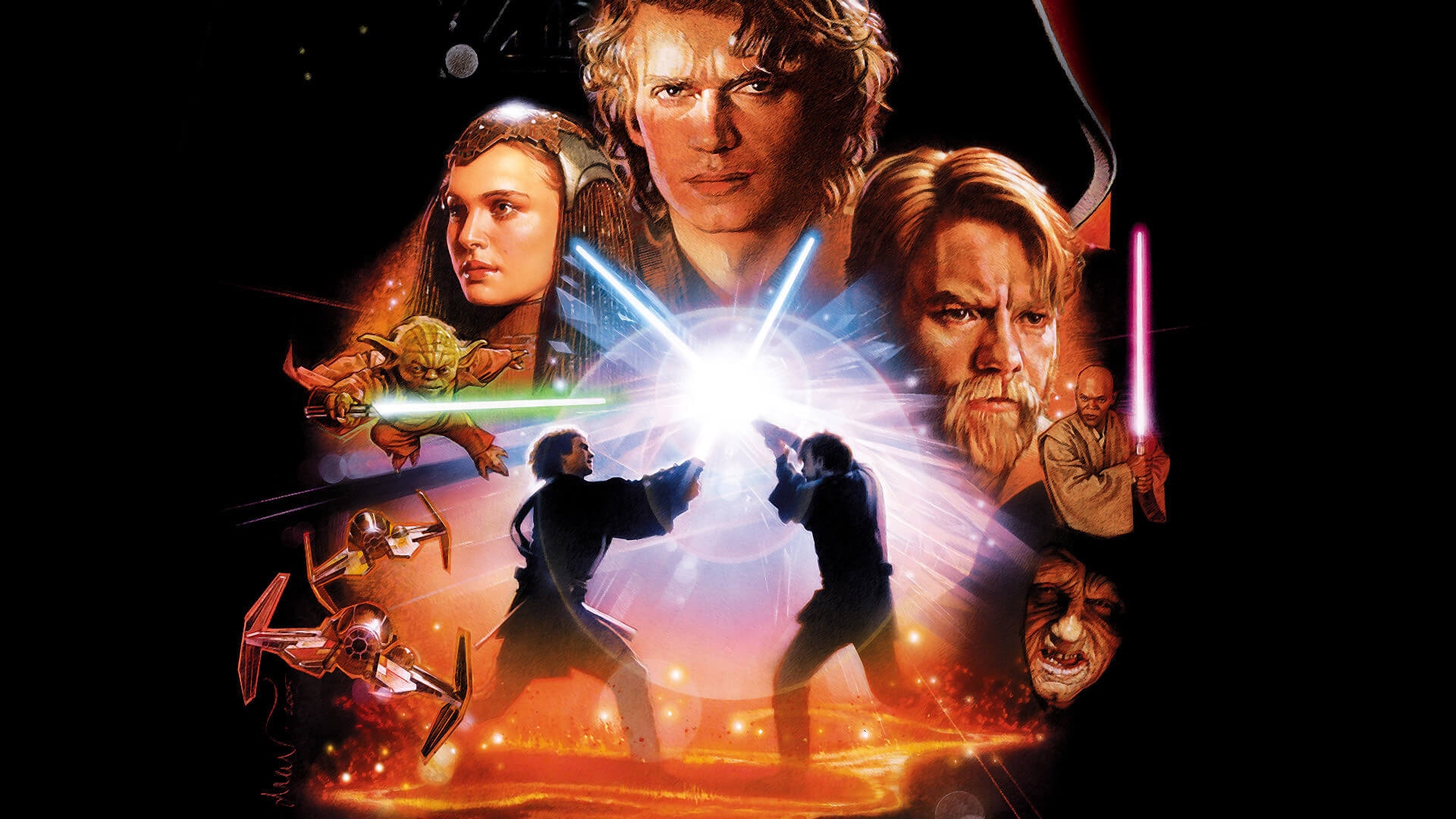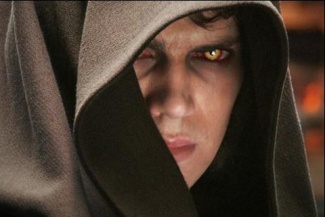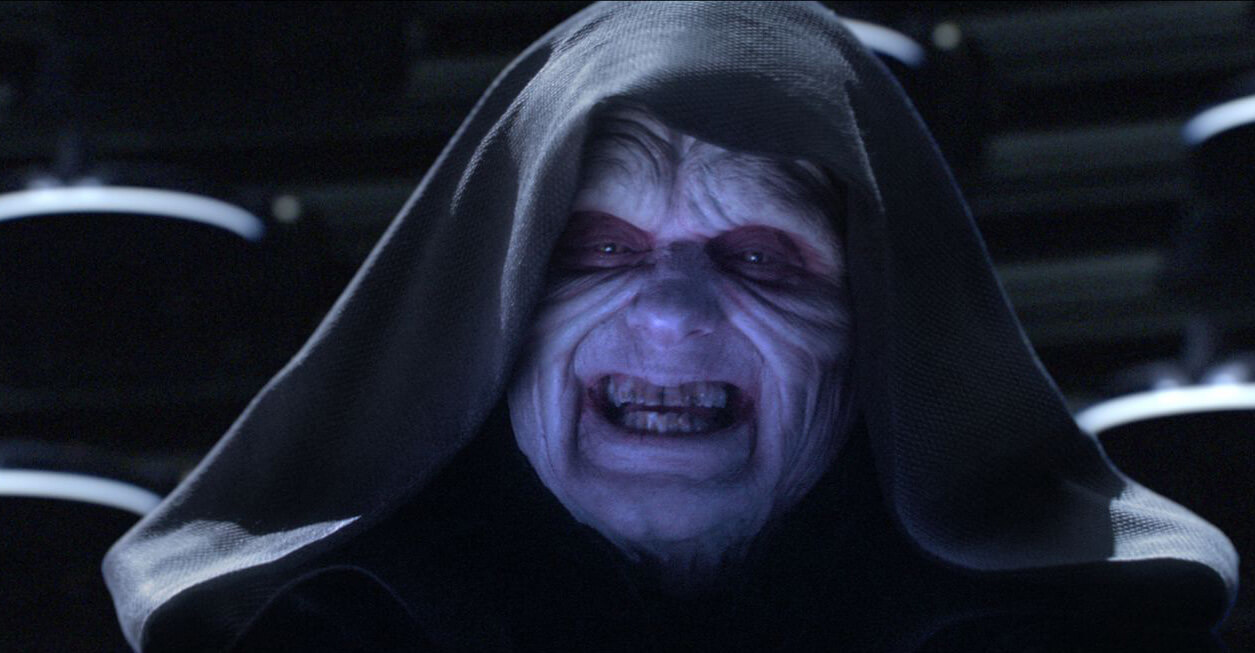The films in the Star Wars prequel trilogy are often considered to be bad. Objectively so. In the lead up to the release of Star Wars Episode VII: The Force Awakens, we here at The Nerd Stash thought that we should question that notion, and see what we could glean from looking at the positive things that came out of these often maligned movies. We’ve already covered Episode I and Episode II, and now it is time for the saga to become complete, as we take a look at the positive side of Star Wars Episode III: Revenge of the Sith.
I feel that I need to mention that I am, myself, very fond of this film. Apparently my opinion is only slightly removed from that of general audiences, as Episode III is the best received of the prequel trilogy. According to its scores, it is generally thought to be superior to Episode I and Episode II but worse than the original trilogy, and overall I would concur with that. Episode III definitely has its fair share of issues that prevent it from being truly great. But inside of this film I see something wonderful. I see the bones of a masterpiece; I see the possibility of greatness.
I feel that, if this film had been handled differently, it might have been the best out of all of the Star Wars films. I know this may seem like an outrageous claim but this film is a guilty pleasure of mine and I love it despite its flaws to the wonderful film and concepts therein. In addition to all the things that people complain about, there are also some parts which are objectively good as well.
Let’s start with the obvious. The music is composed by the ever-amazing John Williams. The scores of all of the films have been produced by this man and rightly so. Williams helped introduce the concept of the leitmotif (a recurrent theme associated with a character, location, etc.) with his introduction of the Imperial March as well as many other songs from the original trilogy. He continues this tradition in the prequel trilogy, introducing thrilling musical pieces such as Battle of the Heroes (sampled below).
[embedyt] https://www.youtube.com/watch?v=dRgXGigPKuc[/embedyt]
[gap height=”15″]
In addition, throughout not only Episode III but also throughout the entire prequel trilogy, themes from the original films have been interspersed among the tracks of the new score. This commingling of leitmotifs, of themes both new and old, leads to a soundtrack full of mixed experiences. By depending on both eras using nostalgia and novelty to tantalize us, the score perfectly mirrors the script which interweaves all of this into its overarching narrative.
The prequel trilogy is just that: a prequel. These movies explain what occurred before the original films and serve to set up the events that take place in them. From the second you start watching the prequels (assuming you watched the movies in release order) you start to look through the worlds they present for familiar characters and places. Well if that’s Obi-Wan Kenobi then who is this kid? How did R2-D2 and C-3PO get here? Why do the Clone Troopers look so much like Storm Troopers? As prequels, these movies try very hard to answer all of the lingering questions anyone might have about the world prior to those original movies while setting them up, expanding the world, and explaining how all of the familiar characters we know and love got where they are. All of the prequels aim to do this but, Episode III does it best. It is the payoff. it is the conclusion that the first two films built up to, and it is both the end of this series of stories and a bridge to the originals.
Most importantly, Star Wars Episode III is the story of the fall of Darth Vader.
The prequel trilogy as a whole could be looked at as the story of Anakin Skywalker, but the last film is where his tale really comes into focus. During the first two films, Anakin was found by the Jedi and began to learn his place in the world. He began to understand who he was and what he could do. He grew as a person (despite being poorly acted throughout). He gained discipline and power. He fell in love. All this was before, during the first two films. As Anakin grew and began to learn more about the universe he resided in, so did we. This is the film in which we see all of the actions of the first two really begin to play out, it is at this point that all of the long-term consequences of these events begin to make themselves known. It is during Episode III that Anakin really comes into his own and starts to act according to his own will, at which time one might say that Anakin has become an adult.
As a side note, in contemplating the writing of this article, I noticed that Anakin Skywalker as portrayed by Hayden Christensen and as written by George Lucas in these films, especially Episode III, bears striking similarities to angst-fraught anime teenagers. One of the reasons some people can’t take anime very seriously is that, in certain series, when characters try to emote they burst into histrionic fits and scene-long monologues. I can understand why people might find this annoying. The way Anakin speaks in these films, especially the way his romance with Padme is written, for instance (whenever he talks about not being strong enough to save her), I am once again reminded of those angsty anime teens. But I digress.
If this film had been written or acted slightly better I believe that this would be the single greatest example of a hero’s tragic fall in film history. For whatever reason, even the veteran actors such as Samuel L. Jackson and Ewan McGregor tend to give subpar performances in Episode III. But there is one man, one character, who shines above the rest. Anakin’s fall to the Dark Side does not occur in a vacuum. He has been manipulated by both environmental forces, and the corrupting machinations of one man, the Sith Lord Darth Sidious, Emperor Palpatine.
Ian McDiarmid, Palpatine’s actor, provides a fantastic example of how adding something great to something that is just ok can raise the quality of the experience as a whole. Star Wars Episode III: Revenge of the Sith would not be a bad film without McDiarmid, I just don’t think that I would love it as much as I do.
As Palpatine, McDiarmid really steals the show. It is almost perverse to watch how he manipulates Anakin into directly submitting to his will. As it becomes clearer that Palpatine is not just a scoundrel, but an embodiment of ill will and the one responsible for the entire war, as a viewer you start to question everything that has happened up to this point. By the end of the film you cannot help but marvel at the skillful work of Sidious, who not only managed to corrupt Anakin to the point where he willingly murdered dozens of children, but who also took control of the entire galactic republic and destroyed almost all of the Jedi in one fell swoop thanks to deviously constructed plans set in motion decades ago.
McDiarmid embodies the dual roles of the charming senator and the evil overlord so well, and there are so many scenes that I could point to where he somehow manages to do both at the same time, where Palpatine talks sweetly into the young Skywalker’s ear whilst leaving just enough darkness in there to communicate his evil intent to the audience. Watching him turn Anakin into Vader is both horrific to behold and a pleasure to watch, in large part due to the masterful way in which McDiarmid does this. The outpouring of emotions that one feels while watching the light of this once happy little boy become extinguished is what the ancient Greeks might have termed catharsis, and it is a thing only the best of stories can evoke in us.
Star Wars Episode III: Revenge of the Sith isn’t perfect by any means. There are wooden performances all around, especially from Hayden Christensen, but from most of the rest of the cast as well. The writing can be weird or off at times, and occasionally some special effects might remind you that this film came out a decade ago. Ultimately, this is the climax of the tale that George Lucas intended to tell with the prequel trilogy, and it shows. It is the most polished, out of the three and it includes some incredible acting and story-telling, at times. It is not the best across the board, but the tale is so epic in scale and so personal in nature that it gets to me every time.
The prequel trilogy doesn’t explain everything about the events of the original trilogy, but it does a damn fine job of setting it up and adding another layer of emotions to those characters whom we were already familiar with while attempting to tell a vast and original story along the way. Did it fail often? Absolutely. Was there some good to come of it? My colleagues and I believe so. Ultimately, our goal in writing these articles about the prequel trilogy was to try to get people to think of these films, which they may have given up on, in a different way, to get you to reconsider how you have viewed them, and to get you to keep an open mind the next time you encounter them.
Hate Star Wars Episode III: Revenge of the Sith? Are you just reading this article to hold you over until the new film arrives? Did any of the articles in this series make you rethink your views on the prequel trilogy? Leave us a comment about it below.










